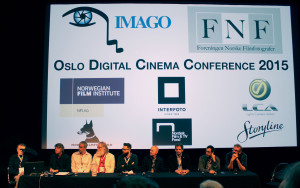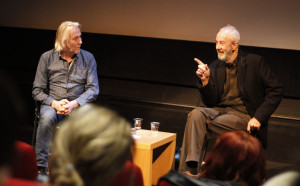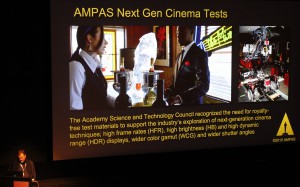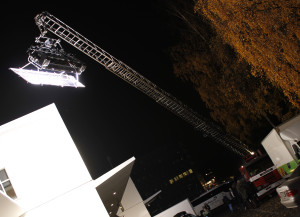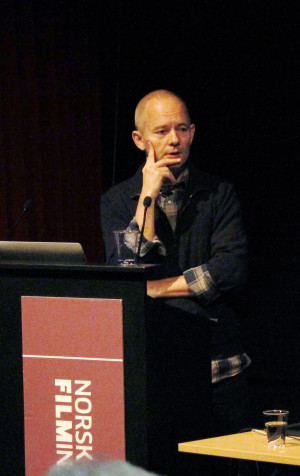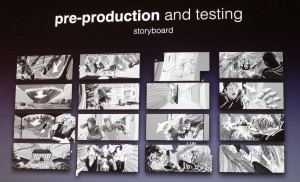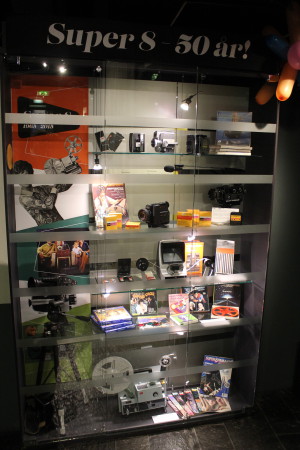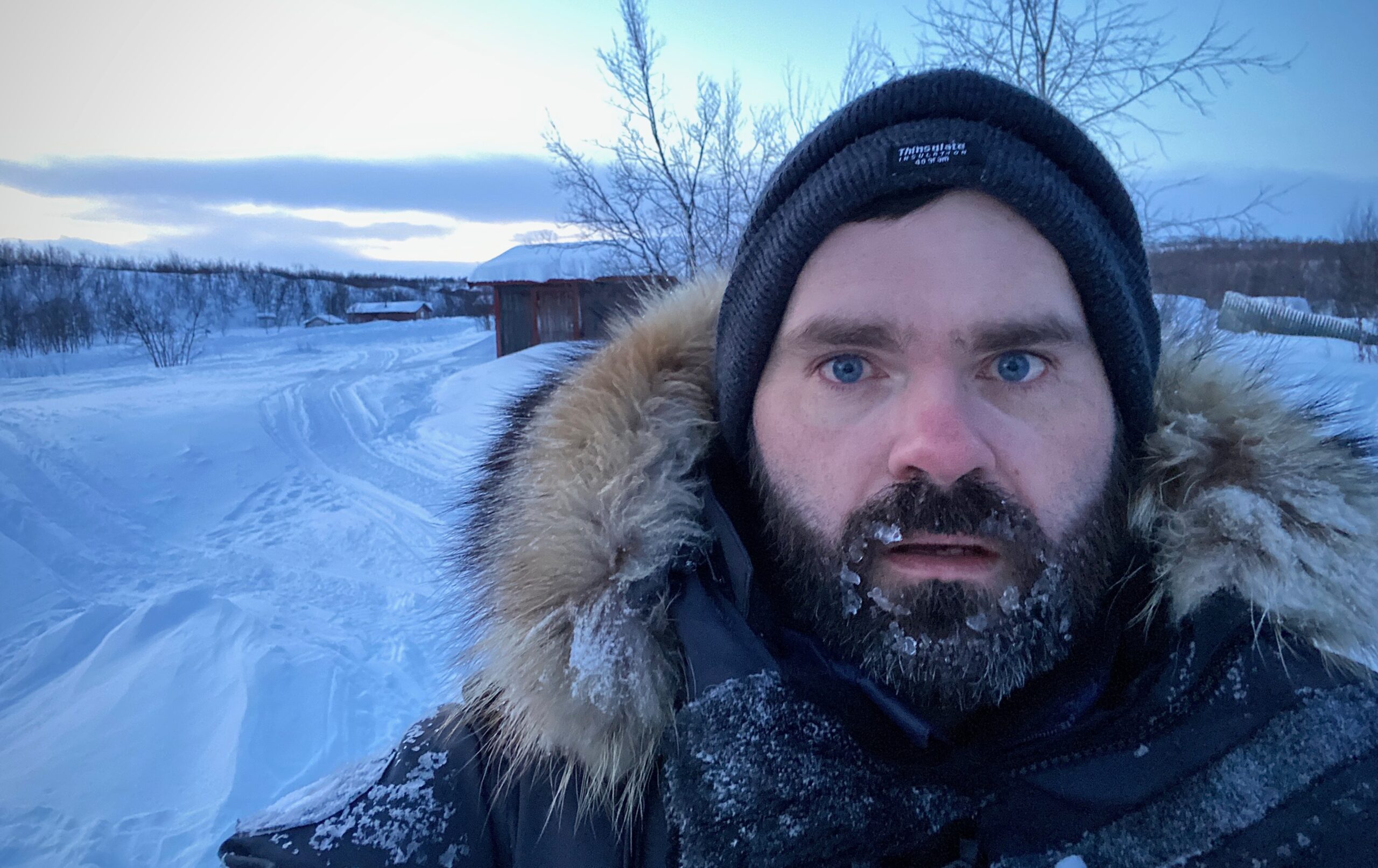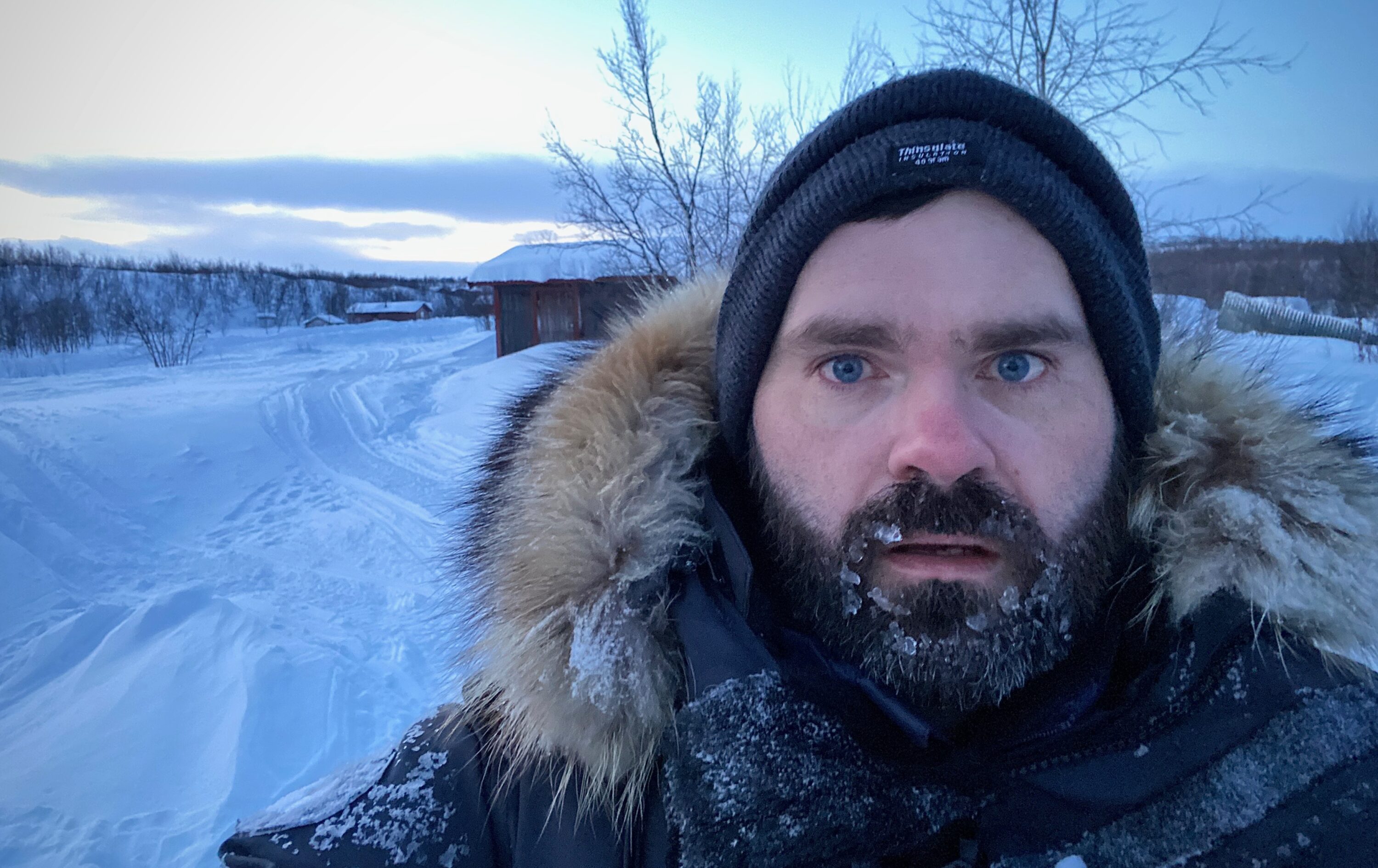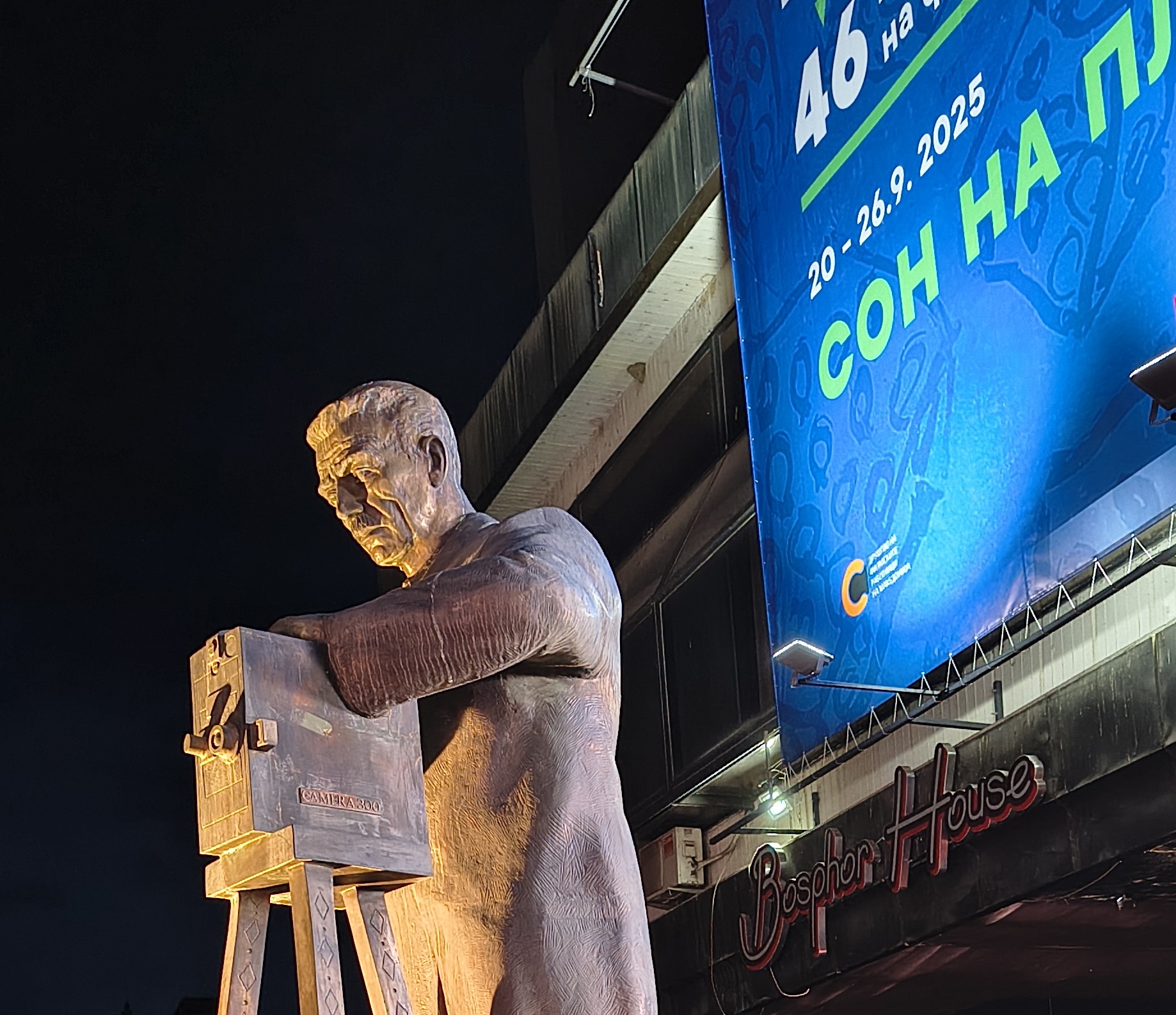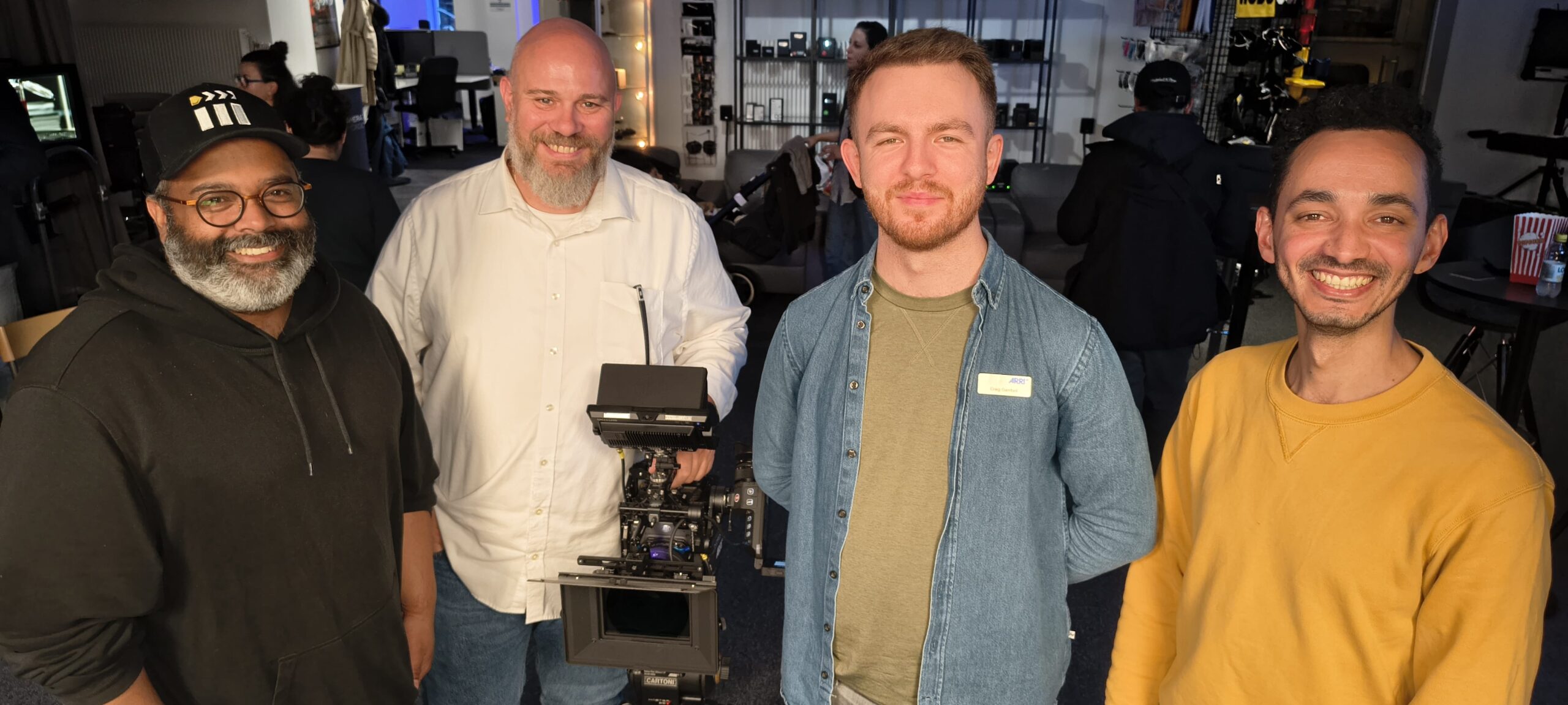The 5th Oslo Digital Cinema Conference
The fifth edition of the Oslo Digital Cinema Conference -ODCC in brief- took place this year at the end of october at the facilities of the Norwegian Film Institute on Dronningens Gate in central Oslo. It was arranged by the norwegian society of cinematographers, FNF in collaboration with IMAGO, the Norwegian Film Institute and Nordisk Film&TV Fond. Apart from a very nice cinema with excellent video projection (apparent during the screening of ’Mr Turner’ friday night) the facilities of the Film Institute also feature a café and even a filmmuseum!
Paul René Roestad, FNF, newly appointed president of the IMAGO declared the conference officially opened, whereafter the president of the FNF, Rolv Haan, held a brief welcoming speech. This was followed by a highly informative panel debate, ’Creative Cinematography and Camera Control’ moderated by Philippe Ros, AFC and focussing on the dilemma that we now frequently use 4K-cameras to deliver 2K material, and although the cameras all give the same resolution the percieved visual qualities differ greatly among them. Rolf Coulange, BVK, caught the audience’s interest by explaining how the impression of sharpness in the paintings by old dutch masters greatly depended on their use of contrast in the images. Also on the panel were (among others) Harald Brendel (Arri), John Christian Rosenlund FNF, Luc Bara (Panasonic), Colorist Cem Ozkilli, Tom Crocker (Sony) and Dave Stump ASC.
’What next for Digital Cinema?’ turned out to be an intense presentation by Kommer Kleijn, SBC. High Frame Rates (HFR) is already a familiar concept to the world’s cinema audiences thanks to Peter Jackson’s Hobbit-trilogy, och laserdriven videoprojectors are already installed in places. Laser allows for greater light output and therefore makes silver screens redundant. Apart from using laser as lightsource, these projectors are otherwise based on traditional technology.
After a coffee break, it was time for four presentations in a row. Perhaps the most interesting of these was ’Characteristics and Limitations of Digital Colour Photography’ during which Harald Brendel from ARRI explained the complex relationship between the colours of a subject, the ways various cameras handle this under different kinds of lighting (LED, HMI etc) and the perceived colour that finally reaches the eye of the beholder.

Report from the Imago and ASC technical commitées: Philippe Ros AFC, Rolf Coulange BVK, Kommer Kleijn, SBC and Dave Stump ASC.
The second presentation centered on the responsibility of the DIT to safeguard the integrity of the recorded material throughout the production. A comparison between different kinds of LED lights followed, evaluating their effect on skintones: blue LED light risked leading to decidedly unflattering results. The day was rounded off by an overview of the problems facing long term storage of digital media. LTO tapes appeared to be the best compromise here, given the available alternatives.
Later that evening the feature film ’Mr Turner’, Mike Leigh’s uncompromising look at the life and work of the celebrated 19th century painter, was shown. Dick Pope BSC, DoP on the film, informed us that this is Leigh’s first digitally shot feature, and that Pope originally had wanted to shoot it on film, but that Leigh suggested that Turner himself –as the noncomformist he was- probably would have chosen digital, had he been alive today, and thus they decided to shoot the film on the Alexa.
Saturday began very promisingly with a ’Master Class’ where two-time Academy Award nominee Dick Pope, BSC, recalled his experiences in a conversation with Rolv Haan, FNF. These two gentlemen obviously got along famously and spirits were high. Scenes from Pope’s extensive collaboration with Mike Leigh were shown and accompanied by a conversation that was illuminating and highly entertaining –and sometimes downright moving when direction, acting and cinematography really jelled.
After lunch a veritable smorgasbord of options available in Norway for moving-camera shots was presented. Aircam Sweden, Magic Air and Moviebird demonstrated Drones, ’Russian Arms’ and Technocranes through dazzling showreels.
Then ARRI, Panasonic and Canon revealed the latest updates regarding their cameras. Impressive 4K showreels were screened and the Panasonic Varicam delivered intense colours, but perhaps Canon had the most remarkable item: an extremely light-sensitive video camera capable of an ISO close to 4 million! Surveillance applications seem obvious, but this camera will surely prove indispensable in searching for missing people, where the loss of daylight frequently means the search must be called off.
After a coffee break Dave Stump, ASC, explained to us where ’the cutting edge’ is at today concerning Virtual Reality. VR-headsets and I-pads were distributed among the audience and we were treated to a Virtual Reality live broadcast from Los Angeles -with a humourous touch that went over well with the audience! On a more serious note, Dave wrapped the day up demonstrating the ’AMPAS Next Generation Cinema Tests’ –a series of tests designed to probe various aspects of digital cinema, such as HFR, HDR etc. Many members of the Los Angeles film community had volounteered to create these tests, and the scenes we were shown had all been created using motion control, in order to ensure that the focus of the test (for instance FPS) was the only variable between takes.
More information about the next generation cinema technology.
Later that evening a short busride through Oslo led us to the offices of Storyline, Norway’s largest supplier of film equipment, where food and drinks were served. Even though we arrived after dark, the building was bathing in sunlight: the modified fire truck Moviebird had presented earlier that day was parked outside, blasting away with it’s 100 KW xenon light! The fire truck was really impressive: a powerful built-in generator ran the Xenonlight’s massive power supply –which was about the size of an ordinary refrigerator! With inviting facilities more reminiscent of a classy hotel lounge than a rental house, Storyline deserve high marks for the wonderful party they gave, but also for the audacity of having a combination of Red and Alexa cameras with high-end lenses on display throughout the evening! Towards midnight, party guests began to use these cameras as something to lean against!
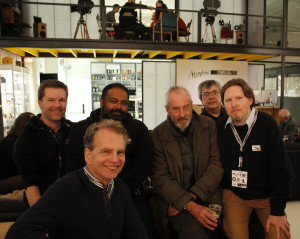
Storyline’s facilities look like a classy hotel lounge! Representing the FSF (from left to right) Alex Lindén, Mats Ardström, Andrès Rignell and (far right) Lars Pettersson, with Dick Pope, BSC. Back row: Petru Maier, DFF.
The audience that filled the cinema of the Norwegian Film Institute on Sunday morning was a docile one. ’Case Study VFX in Film Production: The Wave’ was next in line, but we had no idea what we were in for! ’The Wave’ turned out to be an incredibly ambitious Norwegian ’Disaster Movie’ in the tradition of Roland Emmerich, shot on a modest budget of 5,5 million Euros. A sequence from the movie was screened and it was tremendous, not least because of the Dolby Atmos soundtrack.
In the movie, a gigantic tsunami wave hits a community close to a river, which should give many Norwegian families nightmares… John Christian Rosenlund, FNF, the film’s DoP gave a detailed account how the movie was shot and revealed how all that production value was created out of a relatively modest budget. The absolutely most spectacular scene takes place in Geiranger, one of Norway’s biggest tourist attractions, which in the movie is wiped out by the tsunami wave travelling along the Geirangerfjord. Using hundreds of extras, and several camera teams, they managed to get away with 140 camera setups in 15 hours(!) which greatly contributes to the film appearing to have cost much more than it did. Building the sets in Bucarest, Romania, meant larger studio facilities and dozens of elecricians.
One of the more delicate problems Rosenlund faced, was having to decide months in advance where lights should be in the sets that were to be flooded –as these light mounts had to be welded in place! Lars Erik Hansen from Gimpville inc, explained how the digital effects had been created and Cem Ozkillici, Canadian colour grader, demonstrated his approach to colour correcting the show –an assignment he pulled off in ten working days (!)
Rounding off the conference were two brief speeches on HDR and pre-visualisation, respectively, followed by an update from the technical commitees of Imago and the ASC. Paul René Roestad, FNF, then received well-deserved applause for a most memorable and skillfully executed conference.
Lars Pettersson

